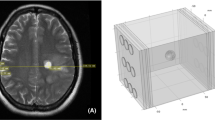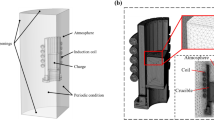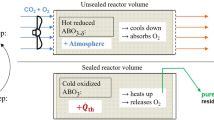A software package has been developed for planning skull formation dynamics on an oxygen converter lining surface in the faculty of high-temperature materials chemical technology (HMCT) of SPbGTI (TU). An information base is provided making it possible making it possible to use to the software package developed under converter production conditions.




Similar content being viewed by others

References
S. A. Suvorov and V. V. Kozlov, “Model estimate of the thickness of periclase-carbon lining surface formation for an oxygen converter skull layer,” Ogneupory Tekhn. Keram.,, No. 11/12, 17 – 20 (2009).
S. A. Suvorov and V. V. Kozlov, RF Patent 2404262, Modifier of magnesia composition for converter slag and method of modifying converter slag.
R. S. Takhautdinov, V. F. D’yachenko, V. G. Ovsyannikov, et al., “Experience of operating periclase-carbon refractory objects in a 370 ton OAO MMK converter,” Novye Ogneupory, No. 10, 10 – 12 (2005).
O. B. Voronina and A. V. Dvortsov, “Experience of operating a periclase-carbon converter refractory lining from objects of the firm RKhI,” Ogneupory Tekhn. Keram.,, No. 2, 31 – 32 (2008).
Author information
Authors and Affiliations
Additional information
Translated from Novye Ogneupory, No. 1, pp. 35 – 37, January 2011.
Rights and permissions
About this article
Cite this article
Suvorov, S.A., Kozlov, V.V. Planning of skull formation at an oxygen converter lining surface and optimization of modifier consumption. Refract Ind Ceram 52, 29–31 (2011). https://doi.org/10.1007/s11148-011-9358-1
Received:
Published:
Issue Date:
DOI: https://doi.org/10.1007/s11148-011-9358-1



